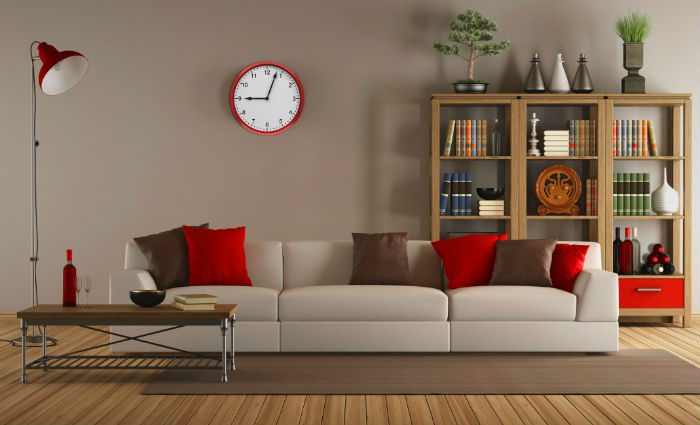The psychology of space: what does your home say about you?
January 04, 2015
Can someone deduce your memories just by reflecting on how you’ve organised your home?

Look around your home. Virtually everything there is what it is and where it is because of something you did.
Whether it’s a family photo pinned to the fridge, an organizational system which has lapsed over time, or even a book which was at one time read everyday, now pushed to the back of the shelf – but importantly, not thrown out. All these little details are a reflection of your personality, of how you view yourself, your family and what’s perhaps changed over the years.
“Essentially, what your home does is distil a very long history of behaviours and choices,” explains Sam Gosling, Professor of Psychology at the University of Texas.
“If you meet someone for a short period of time you only have a very short sample of their behavior. But the items in their home reflect persistent and repeated behaviours and choices (whether deliberately or subconsciously), carried out time and time again. This makes them a very reliable way to gather information about that household.”
In his book, Snoop, Professor Gosling explores how we showcase our personalities in unexpected and unplanned ways in our private spaces: “One way to think about it is that there are lots of ways we betray our personality in day-to-day life, both deliberately and inadvertently.”
Below, Professor Gosling explains the three broad ways in which we express ourselves in our spaces, and how these help reflect the changes our lives go through.
1. Claiming your identity
“We use our homes to make purposeful and deliberate statements about ourselves,” he explains. “I call these “identity claims’, and they’re designed to reflect our attitudes, our goals, our values, our roles and priorities. You might be displaying cultural iconography, photos of you with your partner, certain books you want people to see. You’ll find these in your public spaces, places where you’re trying to essentially say to people visiting ‘this is who I am and this is what matters to me’.”
2. Choosing our thoughts and feelings
“This is also something we can do deliberately to our space, but the goal here is to make us think about certain things and feel a certain way.
“In a living room we may want a sense of welcoming or family, so make decisions to reflect this. While in our bedroom, we may want a sense of romance, comfort or rejuvenation. And as our priorities and family dynamics change, what we want from our spaces change.”
“We may also tuck away photos and possessions which mean a certain thing to us, we call these social snacks,” he says. “Little photos of a grandparent, our kids, a pet dog, or even a holiday memento, so when we’re missing the person or want to feel good, we can turn to that photo or possession. Even if we’re not explicitly thinking about using it for that purpose.”
3. Traces of behaviour
“This is the subconscious way we affect our space. Like Sherlock Holmes looking for evidence of criminal behaviours, someone’s home shows evidence of normal everyday behaviour, which can tell me something about who they are. I call this ‘Behavioural Residue’.
“It might be the way that books are arranged, a ticket from the theatre, a postcard, travel book or memento. Or it could be a reflection of personality: all the cutlery isn’t properly organised in the tray, all the DVDs are alphabetised in their cases, or perhaps there are plenty of spare toilet rolls in the bathroom cabinet. It all reflects things that have, been done to the space and choices that have been made.”

So how do these three different ways we affect our home betray the changes in the way we live, and what matters to us?
Displaying an identity
Think of the photos you’ve had on your wall all through your life. Were you ever a little girl with ponies, a teenage boy with a band poster, a student displaying an idealistic quote, a twenty-something with exciting travel photos, a couple with wedding photos or even a proud grandparent displaying family pictures on a mantelpiece? Our walls are often a timeline of our experiences and priorities.
“As we become older and develop our identity we’re stepping out of the family home on our own,” says Professor Gosling. “We begin to have the opportunity to express the things that place us apart from our family. Perhaps discovering parts of ourselves that we hadn’t notice and which distinguish us from others around us.”
Traces of a journey
It’s not just where you are now that can be reflected in your home, but those trends, phases and even fads we’ve gone through can still be reflected somewhere.
“You’ll often see indications where someone is or has tried to bring something new in,” says Professor Gosling. “Like a few books about the same subject, in an obscure part of the book shelf which makes me think it’s something that was important, but they have stopped thinking about – a temporal trend.
“These can also manifest as new attempted behaviour. For example, if you go into a kitchen and someone has a calendar, it tells you that they’re trying to be organised. It tells you that they aspire to plan ahead, but the most important thing is to look as to whether it’s used.
“There are plenty of people who want to be really organised and they go out and buy a certain calendar or organise their books or DVDs in a certain way, but they never get round to continuing the behaviour. It’s more of an aspiration. And it tells you they’re not a naturally organised person but aspire to be.”
There’s a reason why home is so important to us. It helps reflect every choice, change and important milestone in our lives. Through everyday behavior, and both conscious and subconscious choices, it’s not only a place to relax and enjoy our family, but also an indication of what we value and how that can change.
Make sure that your home and it’s contents are protected by the right home content insurance. With Hiscox, you’ll find cover for everything from doorstep to the kitchen sink in our comprehensive Home Insurance policies.
So what does your home say about you and the changes in your life? Why not tell us about your home on our Facebook page.






 Very satisfied with the service from Hiscox as always
Very satisfied with the service from Hiscox as always

